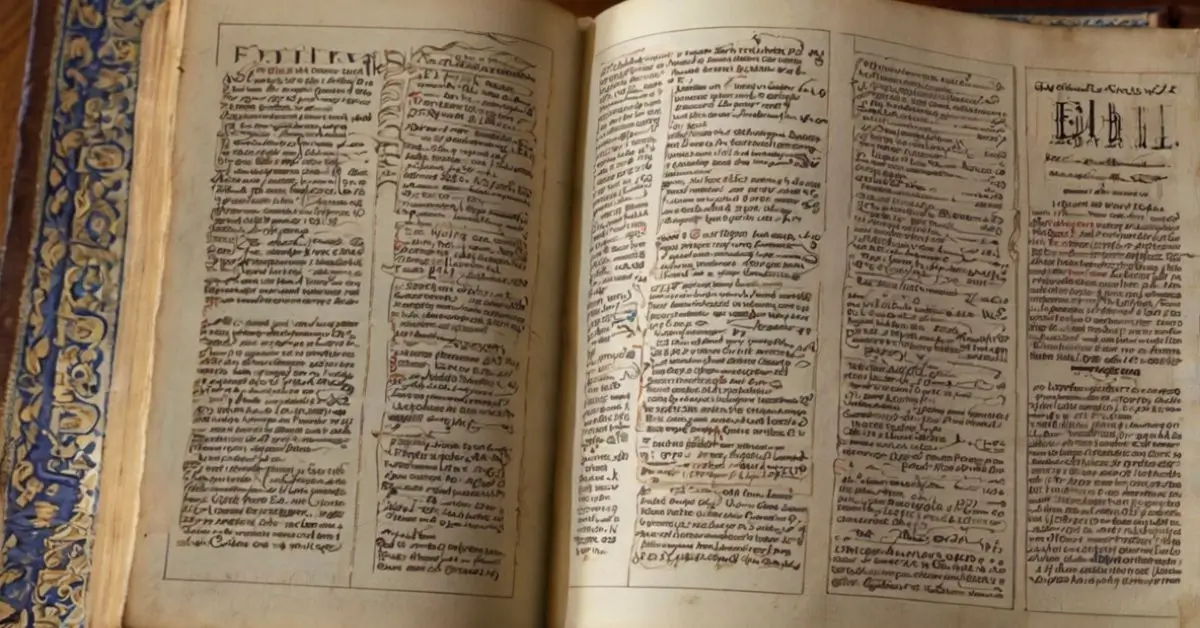When exploring the question, “How many pages is the Bible?” it’s essential to recognize that the page count varies significantly based on several factors, including the version, translation, and additional content. This article delves into these variations, providing a comprehensive overview to help readers understand the length of the Bible in different formats.
How Many Pages Is the Bible? An Overview
The Bible’s length isn’t fixed; it fluctuates depending on the edition and its features. Standard editions typically range from 1,000 to 1,500 pages, while study Bibles can extend beyond 2,000 pages due to added commentary, maps, and notes. For instance, the King James Version (KJV) usually spans between 1,200 to 1,500 pages, whereas the New International Version (NIV) is often around 1,100 to 1,300 pages .
Factors Influencing the Number of Pages in the Bible
Several elements contribute to the variation in the Bible’s page count:
1. Translation and Version
Different translations can affect the length of the Bible. For example, the KJV tends to be longer due to its more formal and archaic language, whereas the NIV uses contemporary language, which might reduce the overall page count .
Inclusion of Additional Books
Catholic and Orthodox Bibles include additional books not found in the Protestant Bible. These extra books can add approximately 200 to 400 pages, depending on the edition . (How Many Pages are in the Bible? Guide [2025])
Font Size and Layout
The choice of font size and layout significantly impacts the page count. Larger fonts and wider margins increase the number of pages, while compact editions with smaller fonts aim to reduce size and weight.
Additional Features
Study Bibles and annotated editions often include footnotes, maps, and cross-references, which can substantially increase the page count. These editions are designed to provide deeper insights into the text, making them longer than standard editions.
Comparison of Bible Editions and Their Page Counts
| Bible Edition | Approximate Page Count | Notes |
|---|---|---|
| King James Version (KJV) | 1,200 – 1,500 | Traditional language; widely used in English-speaking countries. |
| New International Version (NIV) | 1,100 – 1,300 | Modern, readable translation; popular among contemporary readers. |
| Catholic Bible | 1,400 – 1,800 | Includes Deuterocanonical books; varies by publisher. |
| Study Bibles | 1,500 – 2,500+ | Contains extensive notes, maps, and references. |
| Compact Editions | 800 – 1,200 | Portable size; smaller font and layout. |
| Orthodox Bible | 1,800 – 2,200+ | Includes additional texts beyond Catholic editions. |
Understanding the Structure of the Bible
The Bible is divided into two main sections: the Old Testament and the New Testament. The Old Testament contains 39 books, while the New Testament comprises 27 books. The total number of pages is influenced by the inclusion of these books and the translation used.
Historical Context and Evolution
Historically, the Bible was transcribed by hand, making each copy unique. With the advent of the printing press, mass production became possible, leading to standardized editions. Over time, publishers have introduced various formats to cater to different needs, such as large-print editions for the visually impaired and digital versions for tech-savvy readers.
Why Does the Page Count Matter?
Understanding the page count of the Bible is crucial for several reasons:
- Portability: Compact editions are easier to carry, making them suitable for travel.
- Readability: Larger fonts and well-spaced layouts enhance reading comfort.
- Study: Study Bibles provide in-depth analysis, aiding in deeper understanding.
- Tradition: Certain editions are preferred for liturgical purposes due to their formatting and size.
Conclusion: How Many Pages Is the Bible?
The question “How many pages is the Bible?” doesn’t have a one-size-fits-all answer. The page count varies based on translation, inclusion of additional books, font size, layout, and additional features. Standard editions typically range from 1,000 to 1,500 pages, while study Bibles can exceed 2,000 pages. When choosing a Bible, consider these factors to select the edition that best fits your needs.
FAQ’s
1. How many pages are in the King James Version of the Bible?
The King James Version typically contains between 1,200 and 1,500 pages, depending on the edition and formatting.
2. Why do study Bibles have more pages?
Study Bibles include additional content such as commentary, maps, and references, which increase the total page count.
3. Does the Catholic Bible have more pages than the Protestant Bible?
Yes, the Catholic Bible includes additional books known as the Deuterocanonical books, adding approximately 200 to 400 pages.
4. Are there Bibles with fewer than 1,000 pages?
Yes, compact editions with smaller fonts and condensed layouts can have fewer than 1,000 pages.
5. How can I determine the page count of a specific Bible edition?
Check the specifications provided by the publisher or examine a physical copy to determine the page count.












